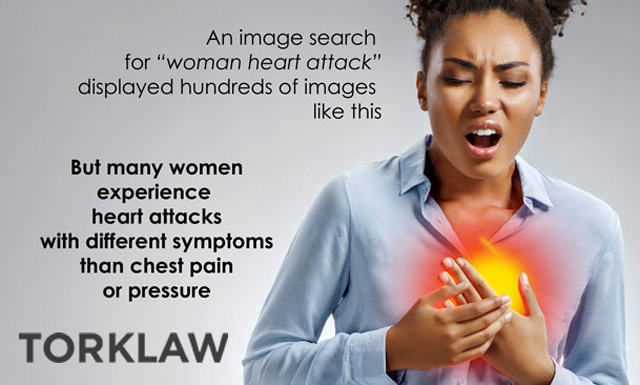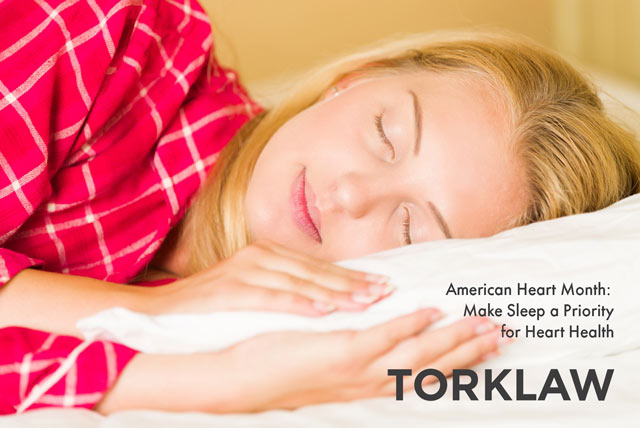One in every four deaths in the United States is caused by heart disease, making it the nation’s leading cause of death. For women, heart disease and strokes cause one in three deaths, taking a woman’s life every 80 seconds. February is American Heart Month, and we encourage you to #GoRedforWomen on February 1. Wear red to raise awareness of the importance of heart health for women, and/or donate to the Go Red cause – do both by shopping the Go Red for Women Collection. Then, share about it on social media using #WearRedandGive.
Types of Heart Disease
The term “cardiovascular disease” describes all diseases affecting the heart, arteries or blood vessels, including:
- Coronary Heart Disease (CHD): A condition causing plaque buildup inside the coronary arteries leading into and out of the heart. This wax-like material clogs or “hardens” arteries, blocking the heart’s blood flow. CHD is the most common cause of heart attacks and what most people mean when they say “heart disease.”
- Congenital Heart Defects are the most common type of birth defects, affecting the way the heart is formed.
Symptoms
Your heart muscle can’t survive without oxygen. When the blood vessels leading to the heart can’t support the blood flow that delivers that oxygen, due to a blockage or defect, a heart attack could occur.
Symptoms of a heart attack may include one or more of the following:
- Chest discomfort: pain or pressure like squeezing or fullness
- Pain or discomfort in other areas: arms, back, neck, jaw, or stomach
- Shortness of breath, with or without chest pain
- Cold sweat
- Vomiting or feeling nauseated
- Lightheadedness

Heart Disease is Different for Women
For years, cardiovascular studies focused on men’s bodies — women were erroneously viewed as though they were simply smaller versions of men. Because heart disease presents different symptoms in women, heart disease in women was often misdiagnosed in the past.
Now we know that heart disease kills more women than all cancers combined, including breast cancer. Still, too often, women don’t recognize their symptoms as heart-related, because they are more likely to experience the less common heart attack symptoms, such as discomfort in the back or the jaw, shortness of breath, nausea and/or vomiting. Some female heart attack sufferers don’t experience any chest pain at all.
Heart disease is a “silent killer” for both men and women because frequently, people don’t notice symptoms until they have a heart attack. Celebrate American Heart Month by learning the symptoms of heart attacks for both genders, and seeing your doctor to diagnose potential risk factors.
Risk Factors
Having even one of the following risk factors doubles your risk of developing heart disease, and each additional risk factor worsens the effects of others.
Smoking exposes you to carbon monoxide, triggers a buildup of plaque in your arteries, and increases the risk of blood clots and heart attacks. Smoking as few as two cigarettes a day increases your risk.
High blood pressure: Blood pressure is the force of blood being pumped against artery walls. If this pressure rises and remains high, it can damage the blood vessels.
High cholesterol: Cholesterol is carried through the bloodstream by particles called lipoproteins. Low-density lipoprotein (LDL, or “bad” cholesterol) delivers cholesterol to your arteries, and high-density lipoprotein (HDL, or “good” cholesterol) removes it.
Diabetes raises the risk of heart disease, especially in women, who are twice as likely to develop heart disease than diabetic men. People with diabetes have a higher level of blood sugar, which leads to increased arterial plaque buildup.
Being Obese or Overweight: Carrying excess weight on your body, especially if it’s primarily in the waist, increases your risk for heart disease. Your Body Mass Index, or BMI, is a good indicator of whether you’re at a healthy weight.
Depression: The Washington Post recently reported some surprising connections between heart health and mental health, particularly depression. Issues related to depression, including inflammation and behavior changes, impact cardiovascular functions. The reverse is also true: having heart disease can cause depression.
Obstructive sleep apnea (OSA): Signs of OSA are loud snoring and/or loud gasps during sleep, and daytime breathlessness. OSA is related to many cardiorespiratory problems, and increases the risk of heart failure by 140%. It also increases the risk of stroke by 60%, and coronary heart disease by 30%.
Unhealthy Eating: Having a poor diet can increase your LDL cholesterol level and blood pressure, and also causes unhealthy weight gain.
Sedentary lifestyle: A lack of physical activity can cause or increase other risk factors for heart disease, such as high cholesterol, high blood pressure, diabetes, and obesity.
If you have one or more of these risk factors, your doctor may want to do further tests to see if any of them are life-threatening. There is a test called cardiac catheterization that can diagnose heart disease, and what type, so that your doctor can prescribe the right treatment. You don’t want to put it off until your doctor diagnoses a heart attack.

Prevention
Fortunately, 80 percent of cardiac and stroke events are preventable. The good news is that men and women alike can prevent heart disease with healthy lifestyle changes. This American Heart Month, consider making just a few small changes.
Eat a Heart-Healthy Diet
Even minor shifts like these can make a major difference in your heart health:
- Reduce portion sizes of foods that are high in calories and sodium.
- Eat more of your favorite fresh fruits and vegetables.
- Choose whole grains rather than processed grains.
- Choose foods with monounsaturated fats (olive oil, canola oil, nut oils, and avocados); decrease saturated fat and avoid trans fats by eating less butter, bacon fat, dairy, and food with coconut, palm and cottonseed oils.
- Eat more low-fat protein like eggs, fish, skinless poultry and other lean meats, legumes and soy; eat less fatty meat, bacon, spare ribs, and cured, or fried/breaded meats.
- Lower your salt intake: don’t add as much salt to your food, eat less processed food, and drink fewer carbonated drinks and more water.
Get Up and Move
Increased physical activity has the added benefit of lifting your mood.
- Spend 2.5 hours each week doing physical activity that raises your heart rate, and leaves you slightly short of breath. That’s just 20-25 minutes per day.
- Include aerobic exercises like brisk walking, jogging, swimming, or going to a fitness class; strength training such as weight lifting, using resistance bands, or your own body weight (like yoga); and stretching with gentle movements before and after exercising.
Quit Tobacco
WebMD says that going one year without tobacco cuts your risk of heart disease in half, and after 5 years, it’s as though you had never smoked at all.
- Nicotine addiction is tough to beat, but programs and medications can help. Talk to your doctor about smoking cessation.
Make Sleep a Priority
The Centers for Disease Control report that one in three American adults don’t get enough sleep.
- The recommended amount of sleep for most adults is seven to nine hours every night: most American adults sleep less than seven hours. This leads to many dangerous behaviors, including drowsy driving.
- It’s a common myth that people can get by on fewer than six hours of sleep a night. In fact, the U.S. Department of Health and Human Services says that not enough sleep may release hormones that keep your blood pressure high, and cause the body to produce unhealthy proteins that harden the arteries.

Stress Less
Take Care of Your Mental Wellness:
- Many of the same strategies to care for the body also benefit mental well-being, including regular exercise, a healthy diet, and adequate sleep.
- Talk therapy helps, even if it’s talking with supportive friends and family members.
- If you are depressed, talk to your doctor; there may be a physical factor involved.
Know and Manage Your Risks
- If you have a condition like high blood pressure, high cholesterol, or diabetes, take your prescribed medications and check in with your doctor regularly.
- If you smoke – quit!
- If you are overweight, have poor eating habits or don’t get enough sleep or exercise, start making small lifestyle changes to improve your health.
- If you have untreated depression or sleep apnea, talk to your doctor right away. These conditions are both detrimental to your heart and your overall health.
Heart disease is the leading cause of death for both men and women. An estimated 790,000 U.S. adults experience a heart attack each year. Don’t be one of them! For American Heart Month, join the TorkLaw team: spread the word and Go Red for Women on February 1.
At TorkLaw, we are committed to improving the quality of life for everyone. We do this by representing those who have been harmed through unsafe products, conditions, and actions and bringing attention to these issues. We also do it by standing with campaigns like American Heart Month – Go Red for Women.





